Clade Euthyneura Rank Family | Clade Heterobranchia Clade Panpulmonata Scientific name Pyramidellidae | |
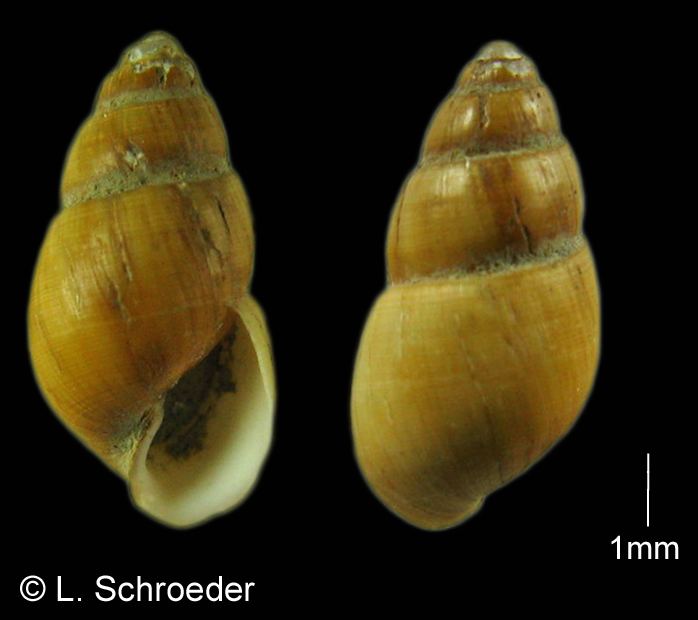 | ||
Lower classifications | ||
Pyramidellidae, common name the pyram family, or pyramid shells, is a voluminous taxonomic family of mostly small and minute ectoparasitic sea snails, marine heterobranch gastropod molluscs. The great majority of species of pyrams are micromolluscs.
Contents
- Subfamilies
- 1997 taxonomy
- 1999 taxonomy
- 2005 taxonomy
- Problematic genera
- Synonyms
- Distribution
- Shell description
- Life habits
- Name derived from shape
- References
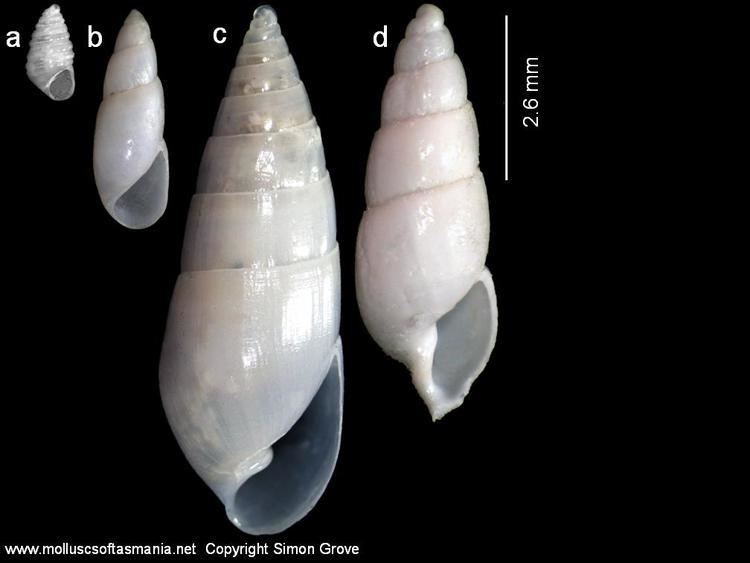
The pyram family is distributed worldwide with more than 6,000 named species in more than 350 nominal genera and subgenera.
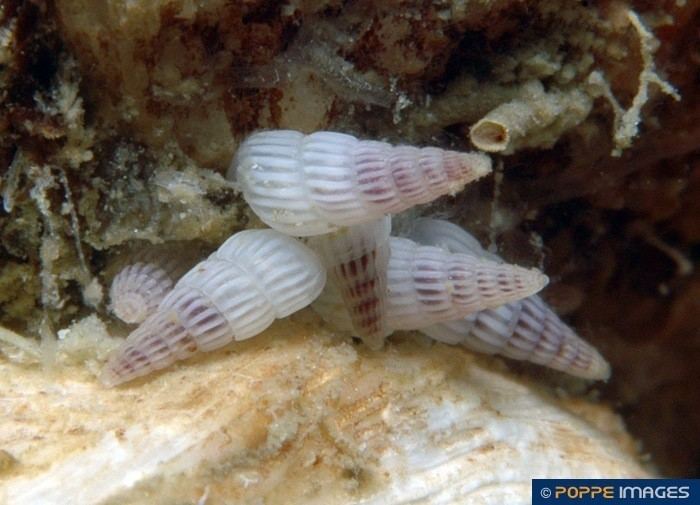
This family of micromollusks has been little studied and the phylogenetic relationships within the family are not well worked out. There is an absence of a general consensus which species belong to a specific genus or subgenus, contributing to much confusion. Schander (1999) names more than 300 supraspecific names. As there has been no serious generic revision of the genera worldwide, generic polyphyly can be expected to be rampant throughout the family. However, the family itself is deemed monophyletic.
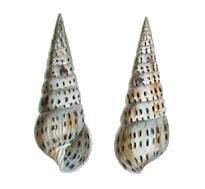
The family is currently divided into 11 subfamilies (Ponder & Lindberg 1997). An alternative interpretation is that the family Pyramidellidae is but one of six families within the superfamily Pyramidelloidea (Schander, van Aartsen & Corgan 1999). Many species are rare or infrequently recorded.
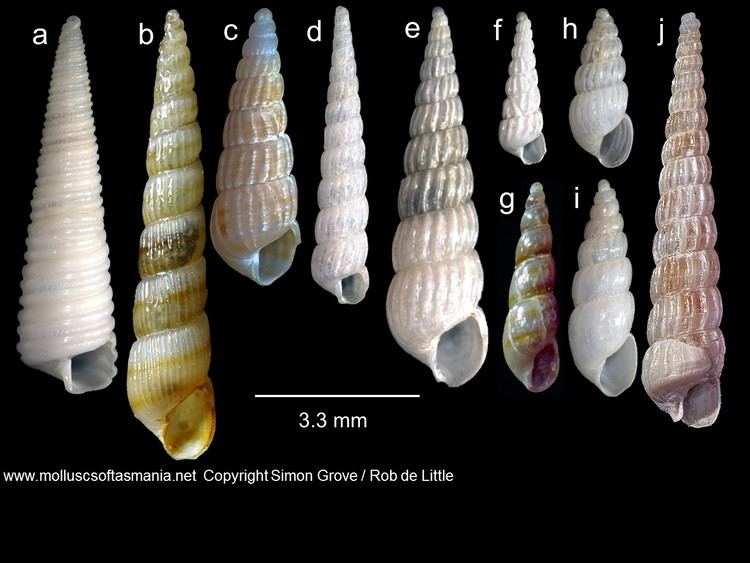
Subfamilies
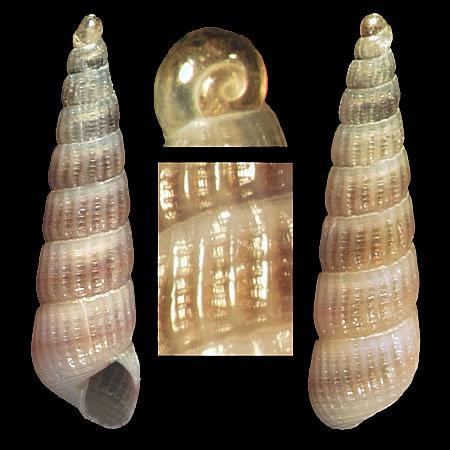
Subfamilies included within the family Pyramidellidae vary according to the taxonomy consulted. The currently leading taxonomy is the taxonomy of Bouchet & Rocroi (2005).
1997 taxonomy
Taxonomy of Pyramidellidae by Ponder & Lindberg (1997):
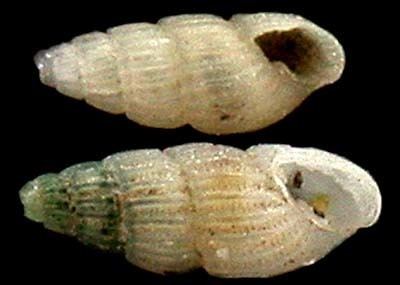
1999 taxonomy
Taxonomy of Pyramidellidae by Schander, Van Aartsen & Corgan (1999):
2005 taxonomy
Taxonomy of Pyramidellidae by Bouchet & Rocroi (2005):
In 2010 the family Pyramidellidae has been recognized as monophyletic
Problematic genera
The following genera are currently difficult to place within existing subtaxa of the Pyramidellidae.
Synonyms
The following genera have become synonyms (but some species in this genera have not yet been reassigned) :
Distribution
This family is found worldwide, but many species are only found in relatively small geographical ranges. The species found at the Cape Verdes are mainly endemic species.
Shell description
The length of the slender, elongated (turreted or conical) shells varies between 0.5 mm and 3.5 cm, but most species in the family have shells which are smaller than 13 mm.
The texture of these shells is smooth or sculptured in various forms such as ribs and spirals. Their color is mostly white, cream or yellowish, sometimes with red or brown lines.
The shell of these snails has a blunt, heterostrophic (i.e. whorls appear to be coiled in the opposite direction to those of the teleoconch) protoconch, which is often pointed sideways or wrapped up. The teleoconch is dextrally coiled, but the larval shells are sinistral. This results in a sinistrally coiled protoconch.
The columella has usually one, but sometimes several, spiral folds. The aperture is closed by an operculum.
The operculum is ovoid and paucispiral, with the apex anterior, a thread-like arcuate ridge on the proximal side, the inner margin notched in harmony with the plaits of the pillar when prominent.
Life habits
The Pyramidellidae are ectoparasites, feeding mainly on other molluscs and on annelid worms, but some are known to feed on peanut worms and crustaceans. A few species in the family Pyramidellidae, such as Otopleura mitralis, are symbiotic with sea anemones, such as Neoaiptasia morbilla
They do not have a radula. Instead their long proboscis is used to pierce the skin of its prey and suck up its fluids and soft tissues. The eyes on the grooved tentacles are situated toward the base of the tentacles. These tentacles have a concave surface. Between the head and the propodium (the foremost division of the foot), a lobed process called the mentum (= thin projection) is visible. This mentum is slightly indented in midline.
These gastropods are hermaphrodites, laying eggs in jelly-like masses on the shell of its host. Some species have spermatophores.
Name derived from shape
The name of this taxonomic family comes from the shape of the shell, which is like a pyramid. More specifically, the shape is like a right circular cone, which is equivalent to a right pyramid whose base has many sides.
